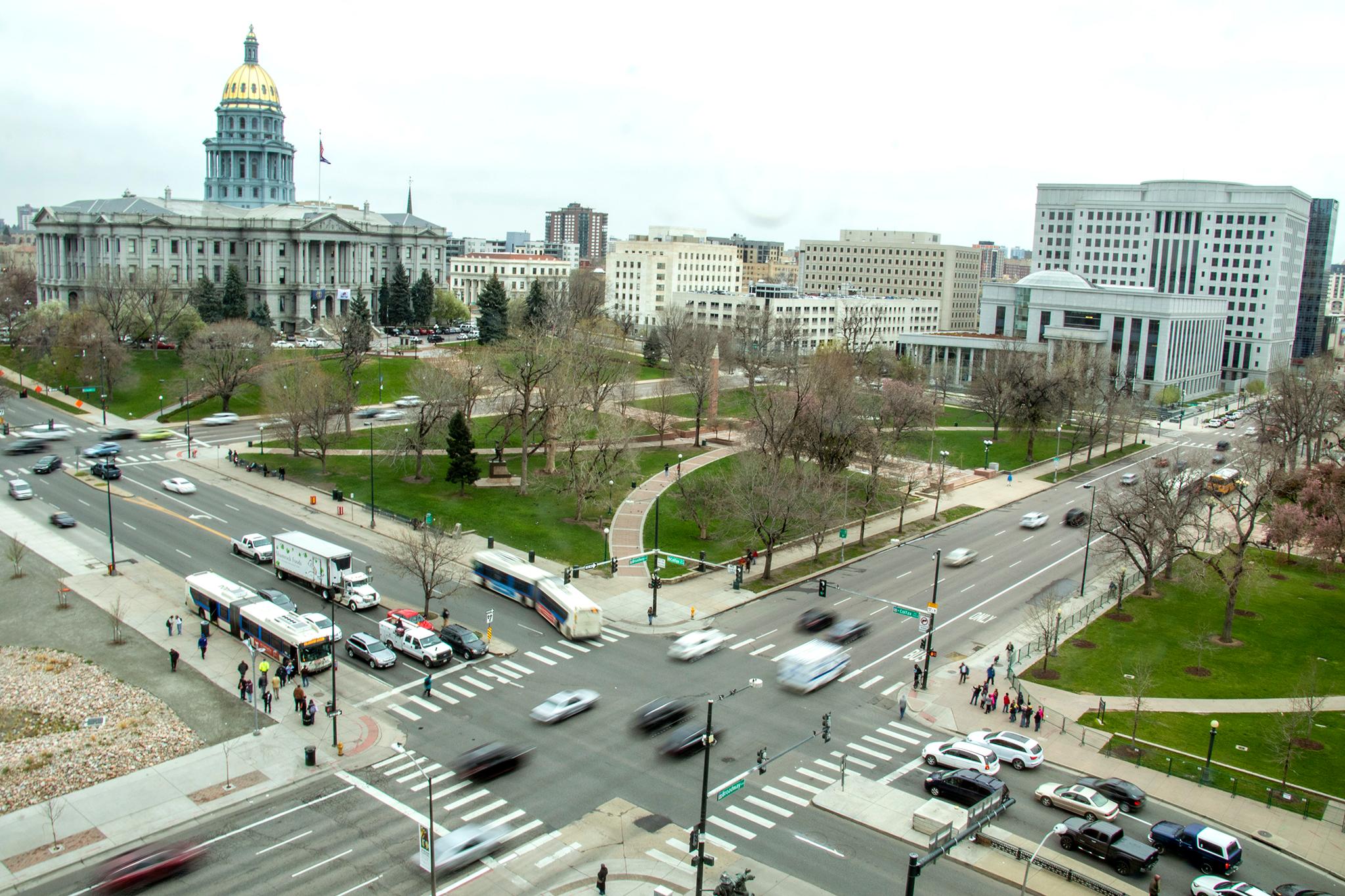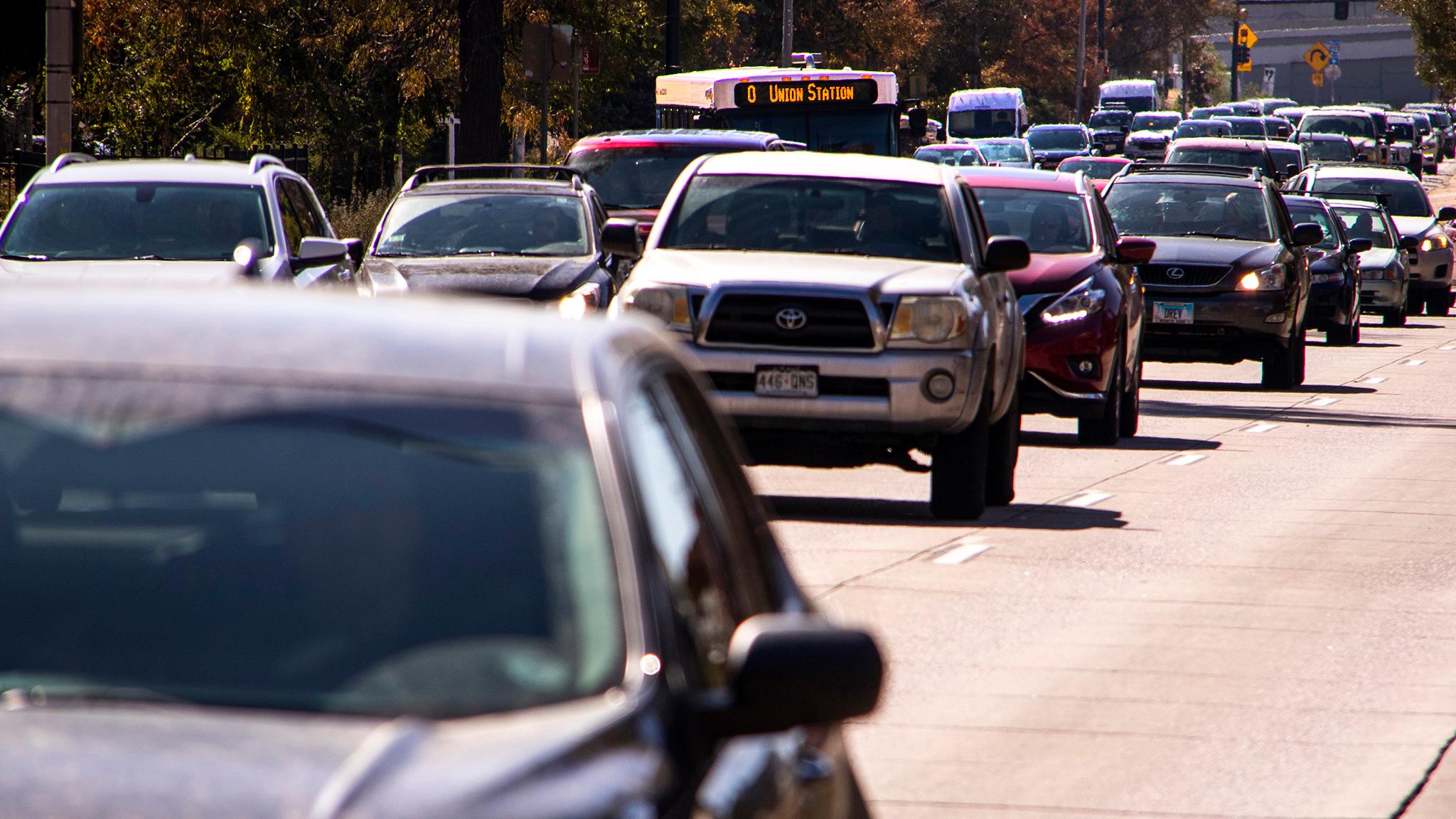Denver Public Works staffers met with neighbors in Washington Park West on Monday to talk proposed changes on Lincoln Street between I-25 and Seventh Avenue, including a potential 24-hour bus-only lane.
Planners see the 24-hour lane as a low-cost, quick way to move more people on the street. The Hancock administration recently announced similar bus lanes on 15th, 17th, 18th and 19th streets downtown.
The government's goal is to continue gathering feedback through November before deciding on a preferred design by early 2020. Transportation planner Zack Wallace Mendez said the budget for the project is about $50,000.
Public Works unveiled its proposal at Ephiphany Luthern Church. Right now, the stretch of Lincoln in question includes four lanes, including three travel lanes and a "flex lane" used predominantly for parking except during morning rush hour when it's a bus lane.
Planners floated four options for the redesign of Lincoln, the northbound parallel to Broadway. The final result may be a hybrid of the various proposals.
The options include:
- Turning the eastside lane into a 24-hour transit-only lane with no parking.
- Turning the eastside lane into a 13-hour transit-only lane (from 6 a.m. to 7 p.m.) and an 11-hour parking lane (from 7 p.m. to 6 a.m.).
- Turning the eastside lane into a 24-hour transit lane and turning the westside lane into a 12-hour general travel lane (from 7 a.m. to 7 p.m.) and 12-hour parking lane (from 7 p.m. to 7 a.m.).
- Turning the eastside lane into a 13-hour transit lane (from 6 a.m. to 7 p.m.) and an 11-hour parking lane (from 7 p.m. to 6 a.m.). The westside lane would become an 11-hour parking lane (from 7 p.m. to 6 a.m.) and a 13-hour travel lane (from 6 a.m. to 7 p.m.).
After the city made similar changes to Broadway (and part of Lincoln), buses were faster and transit ridership grew.
The city built a 24-hour bus lane on southbound Broadway in 2017, which was phase one of the project. Crews added red paint along the lane from 17th Street to Exposition Avenue to discourage drivers from using it and make transit more reliable. Bus speeds increase by 10 percent, or 1.4 minutes, according to RTD spokeswoman Laurie Huff. The 0 saw 6 percent more riders.
Crews also converted the Lincoln bus lane north of Seventh Avenue to a 24-hour bus lane. Combined, Lincoln and Broadway saw buses run two and a half minutes faster, on average, after the transit improvements.
Huff said that RTD supports changes to improve bus speeds.
"Lincoln Street between I-25 and Seventh Avenue is quite busy during the afternoon rush, with buses stopped in congestion for about 20 percent of the time it takes them to travel through that corridor," Huff said in a statement. "It is our hope that faster bus service will keep these vehicles moving, move more people along Lincoln Street and attract new ridership."

Some neighbors were less than enthused with the options.
More than 80 people attended the meeting, which grew tense at times. Concerns centered around removing parking spaces from the street. Locals and their visitors would have to find alternative spots that might be further away from their homes along Lincoln, some said.
Some claimed repurposing parking for a bus lane would hurt property values and questioned whether the design would improve safety along the corridor.

Jon Boho, who lives on Lincoln between Dakota Avenue and Virginia Avenue, said he didn't like any of the options. He said he understands wanting to get more people on buses, but his broader concern is making Lincoln feel less like a highway.
"My biggest priority is to slow the traffic down," Boho said. "It doesn't feel like a residential neighborhood anymore. It just feels like a big highway."
Others applauded the city for prioritizing people on buses over people in cars in one out of four lanes.
"I am totally sympathetic with wanting to get downtown faster on public transportation," said Lincoln Street resident Gertie Grant. "I am totally unsympathetic with getting single-vehicle cars there faster."
Baker resident Mark Hettig wants to see more mobility for buses and, like Boho, would like to see reduced traffic.
"It's a highway through a neighborhood, not a neighborhood street," Hettig said.
Correction: An earlier version incorrectly identified Mark Hettig as Matt.













